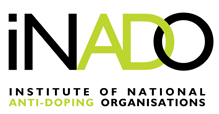Multiple incidence of the prescription diuretic hydrochlorothiazide in compounded nutritional supplements / Donata Favretto, Sindi Visentin Salvatore Scrivano, Emanuele Roselli, Fabio Mattiazzi, Roberto Pertile, Susanna Vogliardi, Marianna Tucci, Massimo Montisci. - (Drug Testing and Analysis 11(2018) 3 (March) ; 512-522)
- PMID: 30194914.
- DOI: 10.1002/dta.2499
Abstract
Diuretic agents are prohibited in sports in- and out-of-competition according to the regulations of the World Anti-Doping Agency (WADA) because of their possible masking effects on other doping agents in urine samples, and their ability to produce fast acute weight losses. Despite previous studies reported adverse analytical findings (AAFs) resulting from contaminations at ppm level (μg/g) of medicinal products, and recommended to introduce reporting limits for diuretics in doping controls, these are not adopted in analyses performed by WADA-accredited laboratories. We report the case of an athlete with two AAFs for hydrochlorothiazide (HCTZ) at low urinary concentrations (<10 ng/mL), who declared the use of nutritional supplements prepared in a compounding pharmacy. His nutritional supplements were analyzed revealing HCTZ presence in different concentrations, at the ppm level (μg/g and ng/mL). With the aim of testing the plausibility of the observed urinary HCTZ concentrations with the nutritional supplement ingestion, a urinary excretion study with three healthy volunteers was performed. HCTZ-contaminated powder (6.4 μg/g of HCTZ) was administered to each subject in different dosages, reproducing the possible ingestion pattern occurred. Urine specimens were collected before and after ingestion of the powder, up to 24 hours, and underwent liquid-liquid extraction and liquid chromatography-tandem mass spectrometry determination. Post-administration specimens were found to contain HCTZ at concentrations of 5-230 ng/mL, which supported the accidental inadvertent intake of the prohibited substance by the athlete. This study makes the argument that the introduction of reporting limits for diuretics are warranted in doping control samples, in order to protect against inadvertent AAFs due to contaminated products.
